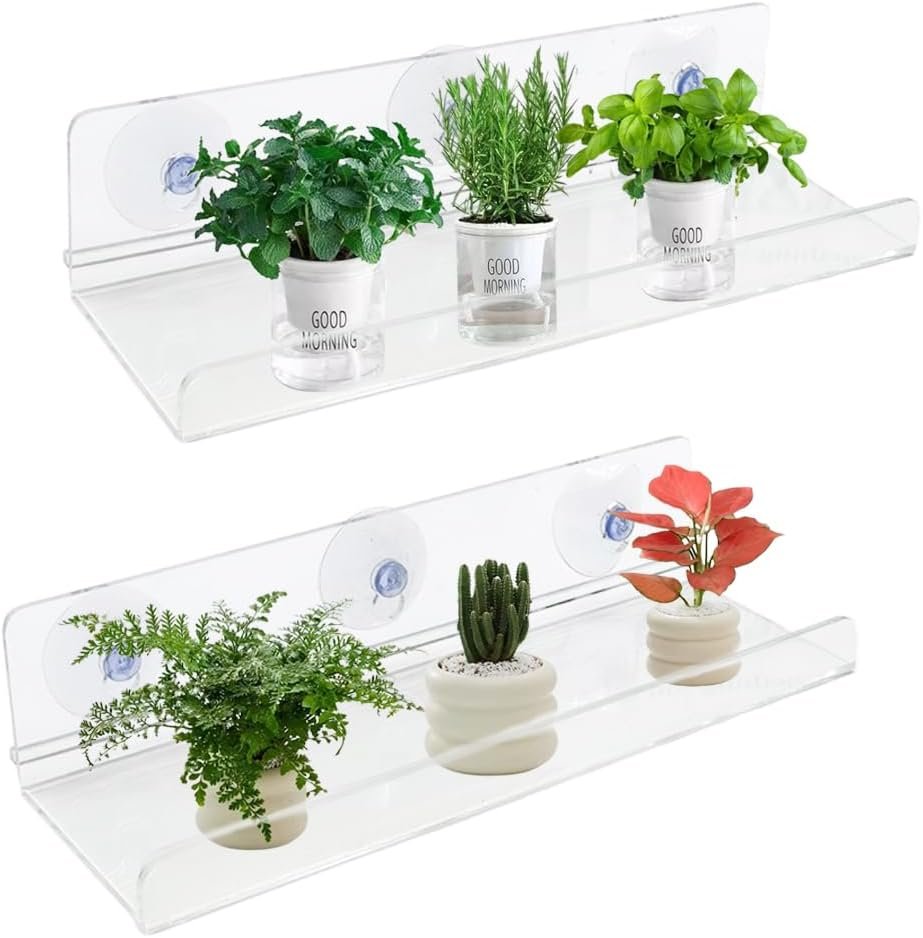Introduction
Transforming your kitchen into a vibrant oasis of greenery is easier than you think. By carefully selecting the right your kitchen windows Plants, you can elevate the ambiance, purify the air, and infuse your cooking space with a sense of tranquility. In this guide, we’ll explore the top kitchen window plants that thrive in various lighting conditions, along with essential care tips and creative display ideas. Whether you’re a seasoned gardener or a novice plant enthusiast, get ready to embark on a journey to create a culinary sanctuary that nourishes both body and soul.

Benefits of Kitchen Window Plants
Enhancing Ambiance and Air Quality
Adding kitchen window plants not only enhances the visual appeal of your culinary space but also contributes to better indoor air quality. Plants act as natural air purifiers, absorbing harmful toxins and releasing fresh oxygen into the air. By strategically placing plants near kitchen windows, you can improve ventilation and create a healthier environment for cooking and dining.
Boosting Mood and Productivity
Studies have shown that surrounding yourself with greenery can have a positive impact on your mood and productivity. The presence of Kitchen window plants can reduce stress levels, promote relaxation, and increase focus and creativity. Whether you’re preparing a meal or enjoying a cup of coffee, the sight of lush foliage can uplift your spirits and inspire a sense of well-being.
Factors to Consider When Choosing Kitchen Window Plants
Light Conditions and Plant Requirements
When selecting kitchen window plants, it’s essential to consider the natural light availability in your space and match it to the specific requirements of the plants you choose. Here are some key factors to keep in mind:
Assessing Natural Light Availability
Begin by assessing the amount of natural light that filters through your Kitchen window plants throughout the day. Take note of the direction your windows face and any obstructions that may block sunlight, such as nearby buildings or trees. This will help you determine the intensity and duration of sunlight exposure in different areas of your kitchen.
Identifying Low, Moderate, and High-Light Plants
Once you’ve assessed the natural light conditions in your kitchen, you can categorize plants based on their light requirements:
- Low-Light Plants: These plants thrive in indirect or filtered sunlight and are suitable for kitchens with limited natural light. Examples include pothos, snake plants, and peace lilies.
- Moderate-Light Plants: These plants prefer bright, indirect sunlight and can tolerate some direct sunlight during the day. Consider placing them near south or west-facing windows for optimal growth. Examples include herbs like basil and mint, as well as spider plants.
- High-Light Plants: These plants require direct sunlight for several hours each day and are ideal for kitchens with ample natural light. Place them near east or south-facing windows where they can receive full sun exposure. Examples include succulents, orchids, and aloe vera.
Top 10 Kitchen Window Plants for Thriving Growth
Aloe Vera (Aloe barbadensis)
- Description: Aloe Vera is a succulent plant with thick, fleshy leaves that contain a gel-like substance. It typically grows in a rosette form and can reach heights of up to 24 inches.
- Ideal Growing Conditions: Aloe Vera thrives in bright, indirect light and well-draining soil. It prefers temperatures between 60-75°F (15-24°C) and requires infrequent watering.
- Uses: Known for its medicinal properties, Aloe Vera gel is commonly used to soothe sunburns, minor cuts, and skin irritations. It also purifies the air by removing toxins.

Spider Plant (Chlorophytum comosum)
- Description: Spider plants feature long, arching leaves that grow in a rosette form. They produce small white flowers that develop into baby spider plants, or “pups,” on long stems.
- Ideal Growing Conditions: Spider plants thrive in bright, indirect light but can tolerate low-light conditions. They prefer well-draining soil and regular watering to keep the soil evenly moist.
- Uses: Spider plants are excellent air purifiers, removing pollutants such as formaldehyde and carbon monoxide from the air. They are also easy to propagate by transplanting the baby spider plants.

Basil (Ocimum basilicum)
- Description: Basil is a fragrant herb with bright green, oval-shaped leaves and small white flowers. It belongs to the mint family and is prized for its strong aroma and flavor.
- Ideal Growing Conditions: Basil thrives in full sun and well-draining soil with regular watering. It prefers temperatures between 70-85°F (21-29°C) and benefits from occasional pruning to encourage bushy growth.
- Uses: Basil is a popular culinary herb used in a variety of dishes, including pasta sauces, salads, soups, and pesto. It adds a fresh, aromatic flavor to recipes and can be harvested throughout the growing season.

Snake Plant (Sansevieria trifasciata)
- Description: Snake plants, also known as mother-in-law’s tongue, feature tall, stiff leaves that grow upright in a rosette form. They come in a variety of cultivars with different leaf patterns and colors.
- Ideal Growing Conditions: Snake plants thrive in low to bright indirect light and well-draining soil. They are drought-tolerant and prefer to dry out between waterings, making them ideal for forgetful or busy gardeners.
- Uses: Snake plants are valued for their air-purifying qualities, removing toxins such as formaldehyde and benzene from the air. They are also easy to care for and can tolerate a wide range of growing conditions.

Jade Plant (Crassula ovata)
- Description: Jade plants are succulent shrubs with thick, fleshy leaves and woody stems. They have a tree-like growth habit and can reach heights of up to 3 feet.
- Ideal Growing Conditions: Jade plants thrive in bright, indirect light and well-draining soil. They prefer temperatures between 65-75°F (18-24°C) and require infrequent watering, allowing the soil to dry out between waterings.
- Uses: Jade plants are often grown as Kitchen window plants or bonsai specimens for their ornamental value. They are believed to bring good luck and prosperity to the home and are often given as gifts for new beginnings.

Pothos (Epipremnum aureum)
- Description: Pothos plants feature heart-shaped leaves that grow on long, trailing vines. They come in a variety of cultivars with different leaf colors and patterns, including green, variegated, and golden-yellow.
- Ideal Growing Conditions: Pothos thrive in low to bright indirect light and well-draining soil. They are drought-tolerant and prefer to dry out between waterings, making them ideal for beginners or busy gardeners.
- Uses: Pothos plants are prized for their air-purifying qualities and are often used to improve indoor air quality. They can be grown in hanging baskets, on trellises, or as trailing vines in pots or containers.

Rosemary (Rosmarinus officinalis)
- Description: Rosemary is an aromatic herb with needle-like leaves and small blue flowers. It is an evergreen shrub that can reach heights of up to 5 feet in the right conditions.
- Ideal Growing Conditions: Rosemary thrives in full sun and well-draining soil with good air circulation. It prefers temperatures between 65-80°F (18-27°C) and requires infrequent watering once established.
- Uses: Rosemary is a popular culinary herb used to flavor a variety of dishes, including roasted meats, vegetables, soups, and bread. It also has medicinal properties and is believed to improve memory and concentration.

Peace Lily (Spathiphyllum spp.)
- Description: Peace lilies are evergreen perennials with glossy, lance-shaped leaves and elegant white flowers. They are known for their air-purifying qualities and ease of care.
- Ideal Growing Conditions: Peace lilies thrive in low to bright indirect light and well-draining soil. They prefer temperatures between 65-80°F (18-27°C) and require regular watering to keep the soil evenly moist.
- Uses: Peace lilies are valued for their ability to remove toxins such as formaldehyde, benzene, and trichloroethylene from the air. They are often used as Kitchen window plants or office plants to improve indoor air quality.

Mint (Mentha spp.)
- Description: Mint is a fast-growing herb with square stems and serrated leaves. It comes in a variety of flavors, including spearmint, peppermint, and chocolate mint.
- Ideal Growing Conditions: Mint thrives in full sun to partial shade and moist, well-draining soil. It is a vigorous grower and may require regular pruning to prevent it from spreading and becoming invasive.
- Uses: Mint is a versatile herb used in a variety of culinary applications, including teas, cocktails, salads, and desserts. It also has medicinal properties and is believed to aid digestion and relieve nausea.

Orchids (Orchidaceae)
- Description: Orchids are flowering plants known for their exotic beauty and intricate blooms. They come in a wide range of colors, shapes, and sizes, with some species producing fragrant flowers.
- Ideal Growing Conditions: Orchids thrive in bright, indirect light and well-draining orchid potting mix. They prefer temperatures between 60-80°F (15-27°C) and require regular watering and humidity to thrive.
- Uses: Orchids are prized for their ornamental value and are often grown as Kitchen window plants or displayed in floral arrangements. They make stunning focal points in any room and can be enjoyed year-round with proper care.

Essential Care Tips for Kitchen Window Plants
Ensuring the health and vitality of your kitchen window plants requires proper care and attention. Here are some essential tips to help your plants thrive:
Watering and Feeding Guidelines
- Watering: Check the soil moisture regularly and water your plants when the top inch of soil feels dry to the touch. Avoid overwatering, as it can lead to root rot. Different plants have varying water needs, so it’s essential to research the specific requirements of each plant.
- Feeding: Fertilize your plants during the growing season (spring and summer) with a balanced fertilizer diluted to half strength. Follow the instructions on the fertilizer package and avoid over-fertilizing, as it can cause nutrient imbalances and harm your plants.
Pruning and Pest Control Techniques
- Pruning: Regularly trim dead or yellowing leaves to encourage new growth and maintain the overall health and appearance of your plants. Use clean, sharp scissors or pruning shears to make clean cuts, and remove any diseased or damaged foliage promptly to prevent the spread of pests and diseases.
- Pest Control: Keep an eye out for common pests such as aphids, mealybugs, and spider mites, especially during the warmer months. If you notice signs of pest infestation, such as distorted leaves or sticky residue, take immediate action to control the pests. Use natural remedies like neem oil or insecticidal soap, or manually remove pests with a soft brush or cloth.
Creative Display Ideas for Kitchen Window Plants
Enhance the beauty of your kitchen with creative display ideas that showcase your window plants in style. Here are some innovative ways to incorporate greenery into your culinary space:
Hanging Planters: Space-Saving Solutions
Hang your favorite kitchen window plants in stylish hanging planters to save precious counter and windowsill space. Choose decorative baskets or macramé hangers to add a touch of bohemian charm to your kitchen. Hang the planters at different heights to create visual interest and maximize the available sunlight for each plant.

Hanging Planters with Macrame
- Perfect Hanging Planters for Indoor Plants
Window Ledges: Natural Sunlit Stages
Utilize the natural sunlight streaming through your kitchen windows by creating a picturesque display on the window ledges. Arrange a variety of plants in decorative pots and place them along the windowsill to create a stunning backdrop for your culinary adventures. Mix and match different plant heights, textures, and colors to create a dynamic and visually appealing display.

Ledge Suction Cup Window Shelf
Powerful Suction Cup
Wall-Mounted Shelves: Vertical Greenery Displays
Maximize vertical space in your kitchen by installing wall-mounted shelves to showcase your window plants. Choose sleek, minimalist shelves that complement your kitchen décor and arrange your plants in a visually pleasing manner. Mix in some trailing plants to add dimension and movement to the display. This innovative approach not only adds greenery to your kitchen but also creates a striking focal point that draws the eye upward.
Experiment with these creative display ideas to bring your kitchen window plants to life and infuse your culinary space with natural beauty and charm. Whether you opt for hanging planters, window ledges, or wall-mounted shelves, your kitchen will become a welcoming oasis of greenery that inspires and delights.
Troubleshooting Common Issues with Kitchen Window Plants
Even the healthiest kitchen window plants can encounter problems from time to time. Here’s how to troubleshoot some common issues:
Dealing with Yellowing Leaves
Yellowing leaves can be a sign of overwatering, underwatering, inadequate light, or nutrient deficiencies. To address this issue, assess your plant’s watering schedule, lighting conditions, and soil health. Adjust watering frequency, ensure proper drainage, and consider supplementing with a balanced fertilizer if necessary. Trim any yellowed leaves to promote new growth and maintain plant health.
Preventing Overwatering and Root Rot
Overwatering is one of the most common issues that kitchen window plants face, leading to root rot and eventual plant decline. To prevent overwatering, allow the top inch of soil to dry out between waterings and ensure proper drainage in your plant pots. Use pots with drainage holes, and avoid letting water accumulate in saucers or trays. If you suspect root rot, gently remove the plant from its pot, trim away any mushy or blackened roots, and repot in fresh, well-draining soil.
Incorporating Kitchen Window Plants into Different Design Styles
Enhance your kitchen’s aesthetic appeal by incorporating window plants into various design styles:
Modern Kitchens: Sleek Green Accents
In modern kitchens characterized by clean lines and minimalist aesthetics, opt for sleek, sculptural plants like snake plants or ZZ plants. Choose minimalist planters in neutral colors to complement the sleek design and create a contemporary focal point.
Farmhouse-style Kitchens: Rustic Charm with Plants
For farmhouse-style kitchens with a cozy, rustic vibe, embrace plants with a natural, unpretentious appeal. Consider incorporating herbs like rosemary and thyme in vintage-inspired clay pots or galvanized metal containers. Display them on open shelves or farmhouse-style windowsills for a touch of rustic charm.
Minimalist Designs: Simple Elegance with Green Touches
In minimalist kitchens characterized by simplicity and clean lines, less is often more. Opt for low-maintenance plants like succulents or air plants in sleek, modern planters. Keep the arrangement minimalistic and symmetrical, allowing the plants to stand out as elegant focal points amidst the simplicity of the space.
Sustainable Practices for Kitchen Window Plant Care
Promote sustainability in your kitchen by adopting eco-friendly practices for plant care:
Composting Kitchen Waste for Plant Nutrition
Reduce waste and nourish your kitchen window plants by composting kitchen scraps like fruit and vegetable peels, coffee grounds, and eggshells. Use compost as a natural fertilizer to enrich the soil and provide essential nutrients for plant growth. Composting not only benefits your plants but also helps reduce your environmental footprint by diverting organic waste from landfills.
Upcycling Plant Containers for Eco-Friendly Decor
Get creative with plant containers by upcycling everyday items like mason jars, tin cans, or old teapots. Not only does upcycling reduce waste and save money, but it also adds a unique, personalized touch to your kitchen decor. Get crafty and transform ordinary objects into stylish planters that reflect your personality and commitment to sustainability.
Conclusion
Incorporating thriving Kitchen window plants into your kitchen is more than just a design choice—it’s a lifestyle statement. From improving air quality and boosting mood to enhancing aesthetics and promoting sustainability, the benefits of kitchen window plants are endless. As you explore the diverse selection of Kitchen window plants mentioned in this guide, we encourage you to unleash your creativity and create your own green oasis in the heart of your home. With a little care and attention, your kitchen will become a thriving sanctuary that nourishes both body and soul by Kitchen window plants.













